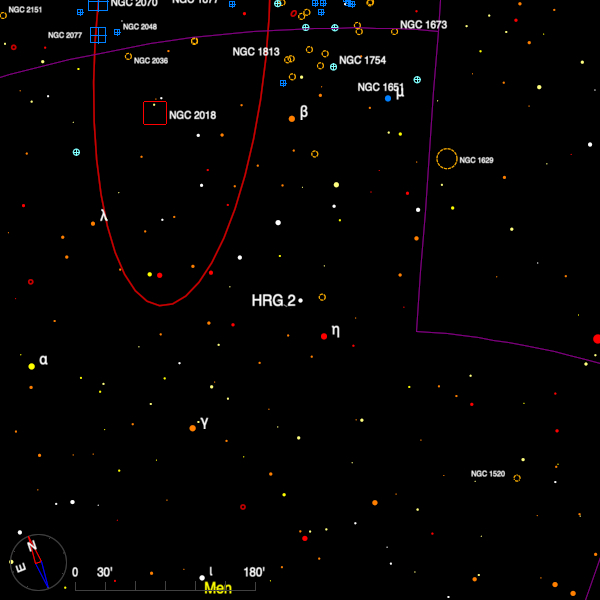December 2023 - Double Star of the Month
About 4 degrees south-west of zeta Tau, is a coarse group of faint naked-eye stars, the brightest of which is 119 Tau, a red supergiant with V = 4.3. One and a half degrees WSW of 119 is 115 Tau, but between the two lie a couple of visual double stars.
Nearest 119 Tauri is HJ 3275 (05 29 49.77 +18 24 58.3) which is a good target for a small aperture - Sissy Haas notes that they are a beautiful sight for an 8 x 50 finderscope
. The stars have magnitudes 7.7 and 8.2 and they are separated by 56" in PA 21 degrees, and are physically unassociated.

Both S. W. Burnham and R. G. Aitken have visited this system and added faint and close companions to both stars. In the case of A (= BU 891) it is a magnitude 12.6 star at 10".6 whilst for C (= A 2433) it is a 12.0 star at 1".4.
A few arc-minutes preceding the A star is STT 108, a discovery by Otto Struve at Pulkovo. In this case the stars are magnitudes 6.7 and 10.4 and separated by 3".2 in PA 131 degrees so they should be visible in 15-20 cm.
The constellation of Mensa is not well-served for visual double stars, in fact this is the first entry for this constellation since the series began in 2006! The Cambridge Double Star Atlas lists only four entries, the brightest of which is HRG 2 (05 01 09.45 -74 20 27.1).

The discoverer name was entirely unknown to me. HRG is the label given to several dozen discoveries by Lawrence Hargrave from Sydney Observatory around 1880. Hargrave was born in Greenwich in 1850 and ended up as an assistant astronomical observer to H. C. Russell in Sydney. He is better known as an aviation pioneer and invented the box kite, a manned version of which he flew to a height of 16 feet. He died in Sydney in 1915.
HRG 2 is a close pair which needs 15-cm and has remained at a separation of 0".8 since its discovery. The stars have magnitudes 7.4 and 8.0. This is a distant system - Gaia gives a parallax of 3.83 mas for the A component corresponding to a distance of 851 light-years.
Bob Argyle - Double Star Section Director